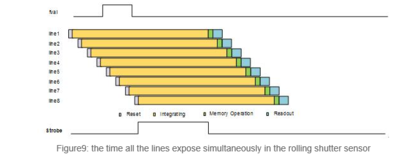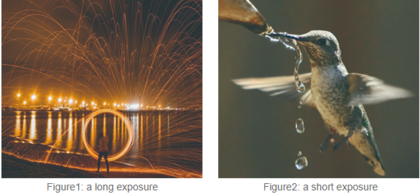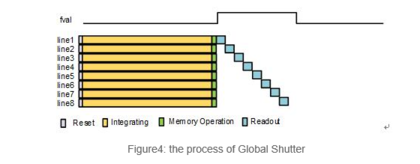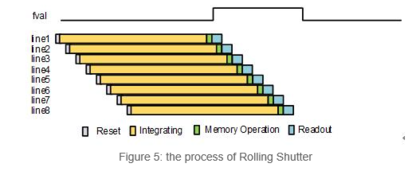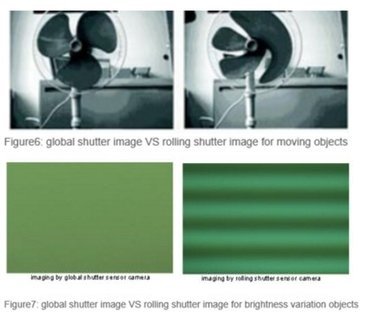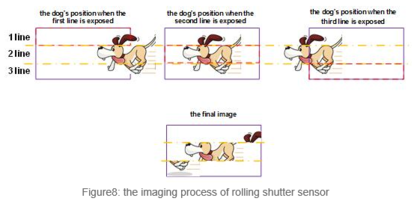If the moving speed is not so high, and the brightness is varied slowly, the problem discussed above has little affect to the image. Usually, using a global shutter sensor instead of rolling shutter sensor is the most fundamental and effective method in high-speed applications. However, in some cost-sensitive or noise-sensitive applications, you could use the flash to mitigate the effects. This is also possiblewhen you have to use a rolling shutter sensor.
Figure 9 shows the following. Strobe is the flash signal output by the camera. When the strobe signal is high, the strobe flashes (sometimes, when the strobe signal is low, the strobe flashes). When the strobe flashes, all the lines expose at the same time, so the image has no distortion.
There are several aspects to be aware of when using the sync flash feature with the rolling shutter sensor:
● Note that with all the exposure time that has strobe signal output, when the exposure time is too short and the readout time is too long, all the lines have no overlap exposure. There is no strobe signal output, and the strobe does not flash.
● When the time of the strobe flash is shorter than the exposure time
● When the strobe signal output time is too short (μs level), some strobe’s performance can’t meet the high-speed switch requirement, so the strobe can’t catch the strobe signal
